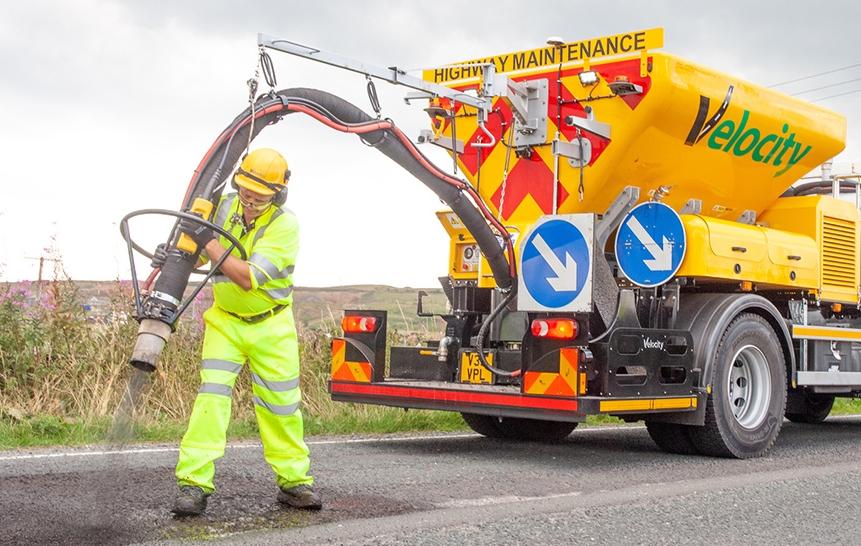The British company Velocity Patching has developed a machine for repairing road potholes. In less than 4 minutes, special equipment completely eliminates road defects. The process of minor road repair using Velocity Patching involves cleaning and sealing the hole, which is then filled with a special compound.
How does Velocity Patching work?
Two or three people can work at the place where potholes need to be repaired. The main work is performed by a trained operator. And the driver of the machine usually helps the operator to bring the equipment and return it to its place.
The only working tool for Velocity Patching is a special gun. First, it blows air at high speed to clean the pothole well. If cleaning the road pit is not required, the same cannon seals the surface of the pothole with cold bitumen.
After the preparatory work, the operator turns on the supply of the repair compound, which fills the pothole. The gun blows out a special filler under pressure and at high speed. At this stage, the operator will need the assistance of the driver to place the asphalt compactor firmly on the ground.
Then it remains only to fill the volume of the pothole with a repair compound so that there is no trace of the pit. To do this, the operator must receive special training to lay the aggregate properly in the right places and prevent uneven asphalt.

Some numbers about patching with Velocity Patching
- The Velocity Patching program measured the duration of such patching. So: two responsible workers completely eliminated one road defect in 3 minutes and 5 seconds!
- Each repair costs £16 ($19), while a traditional patch costs £55 ($66), according to Velocity Patching. This is not the only advantage.
- During one work shift, the Velocity patcher is able to eliminate 200 road potholes. At the same time, the traditional method of patching allows repairing only 20 holes. In addition, the British company’s innovative method requires no excavation, no waste, and no temporary road closures for repairs.
- The company spent 25 years on the development, creation of equipment and testing of the technology.
Expansion of Velocity Patching technologies
Recently, the Velocity Patching fleet has been supplemented by a compact parcher specially designed for the narrow streets found in many British cities (particularly in Cornwall).
The Velocity Power Pack Mini Repair Vehicle uses a truck with a 19 kW (25 hp) diesel engine. In a matter of weeks, the new machine repaired 1,600 road potholes.
